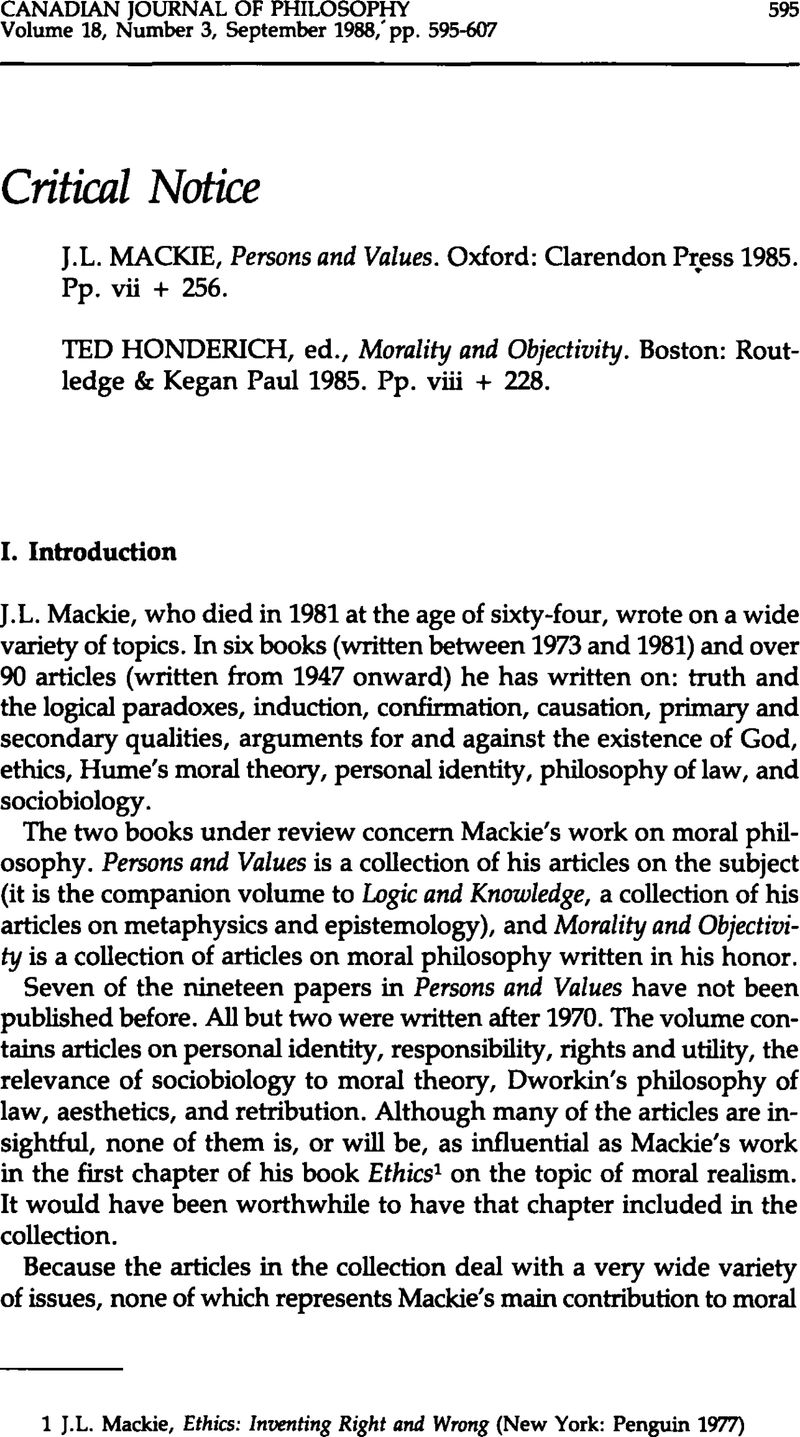No CrossRef data available.
Published online by Cambridge University Press: 01 January 2020

1 Mackie, J.L. Ethics: Inventing Right and Wrong (New York: Penguin 1977)Google Scholar
2 Harman, Gilbert The Nature of Morality (New York: Oxford University Press 1977)Google Scholar
3 See, for example, Boyd, Richard ‘Observation, Explanatory Power, and Simplicity: Toward a Non-Humean Account,’ in Achinstein, Peter and Hannaway, Owen eds., Observation, Experiment, and Hypothesis in Modern Physical Science (Cambridge, MA: MIT Press 1985)Google Scholar.
4 See, for example, Fraassen, Bas van The Scientific Image (Oxford: Clarendon Press 1980)CrossRefGoogle Scholar.
5 Nagel, Thomas ‘The Limits of Objectivity,’ in McMurrin, S. ed., The Tanner Lecture on Human Values (Cambridge: Cambridge University Press 1980), 114Google Scholar
6 Of course, the scientific criteria are relatively vague and not uncontroversial, but that is not of immediate relevance here.
7 What about numbers? Will they be posited by the best scientific explanation? Do they have a causal role? This is a controversial issue, but I would argue in the negative to both questions. The best contemporary discussion of this issue is, of course, Hartry Field's Science Without Numbers (Princeton: University Press 1980).
8 For further discussion of this point, see: Harman, Gilbert ‘Is There a Single True Morality?,’ in Copp, David and Zimmerman, David Morality, Reason, and Truth (Totowa, NJ: Rowman & Allanheld 1984)Google Scholar; Geoffrey Sayre-McCord, ‘Moral Theory and Explanatory Impotence,’ forthcoming in Midwest Studies in Philosophy; and Warren Quinn, ‘Truth and Explanation in Ethics,’ Ethics 96 (1986), 524-44.
9 Defenses of naturalist moral realism have been given by: Harman, Gilbert The Nature of Morality,Google Scholar ch. 4; Sturgeon, Nicholas L. ‘Moral Explanations,’ in Copp, David and Zimmerman, David eds., Morality, Reason, and Truth (Totowa, NJ: Rowman & Allanheld 1984)Google Scholar; Railton, Peter ‘Moral Realism,’ The Philosophical Review 95 (1986), 163-207CrossRefGoogle Scholar; and Campbell, John and Pargetter, Robert ‘Goodness and Fragility,’ American Philosophical Quarterly 23 (1986), 155-65Google Scholar.
10 Note that for the present purposes it doesn’t matter whether my characterization of the distinction between the two models captures the historical distinction between primary and secondary qualities. Nor does it matter whether shape facts and color facts are primary quality model and secondary quality model facts respectively. All that matters is that there is a genuine distinction between the two models.
11 McDowell takes Mackie's views about secondary qualities from Mackie’s Hume's Moral Theory (London: Routledge & Kegan Paul 1980), 51-2, and from Mackie's Problems from Locke (Oxford: Clarendon Press 1976), 15-20.
12 The receptive mechanism might, but need not, involve input channels other than the usual five senses. Either way, the manner in which the mechanism processes its input would be totally unlike anything currently posited by science.
13 Campbell and Pargetter defend at length the secondary quality model (although not under that title) in ‘Goodness and Fragility.’ Gilbert Harman's functional account inch. 4 of The Nature of Morality is also a secondary quality model.
14 See, for example, Frankena, William ‘Obligation and Motivation in Recent Moral Philosophy,’ in Melden, A. I. ed., Essays in Moral Philosophy (Seattle: University of Washington Press 1958)Google Scholar.
15 I have benefited from the critical comments of Greg Del Bigio, David Copp, Shelly Kagan, Morry Lipson, and Geoff Sayre-McCord.